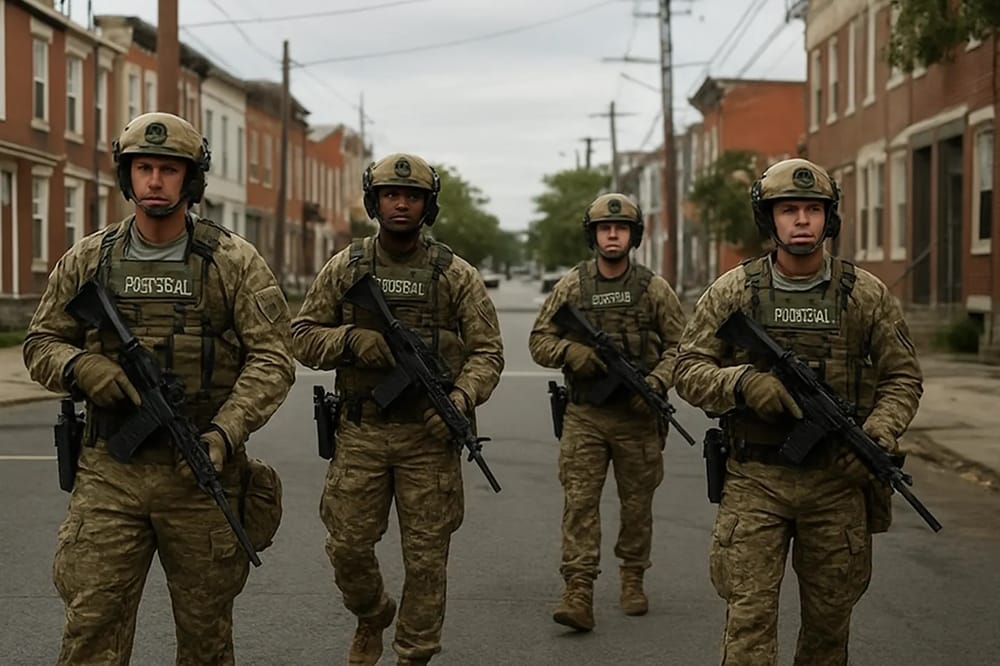I don’t know anyone, Black or white, who likes crime. Most people, even in the highest-crime areas of America aren’t committing, and actually despise, crime.
Even in Memphis, which has the highest crime rate among major U.S. cities, 2% of the population is involved in violent crime. 2% of 600,000 (12,000) residents is still too many, of course, and it makes it difficult for the rest, but it’s important to remember that 98% of the city isn’t harming anyone.
Take it further: Black and white juries across America regularly convict people of all races for crimes, especially violent ones. Black and white residents call the same police when a crime occurs.
So let’s all agree on something: we all want crime, especially violent crime, stopped.
Thankfully, aside from a COVID-era spike, violent crime has generally declined over the past decade. In 2023 and 2024, violent crime dropped 6% and 4.5% respectively. Murders fell 14.9% nationally in 2024, aggravated assault dropped 5%, and robbery declined 3.8%.
Still, violent crime remains unacceptably high in cities like Memphis, St. Louis, Cleveland, Oakland, Albuquerque, Baltimore, Nashville, Detroit, and Washington, D.C.
Let’s also agree on this: we all want violent criminals locked up. Few people, left or right, Black or white, oppose holding the most violent offenders accountable.
But more police and more prisons don’t fix the underlying issues that lead to crime. They may address immediate threats, but they don’t prevent future violence.
For decades, politicians have promised to “get tough” on crime with harsher laws, longer prison sentences, and more policing. Chicago illustrates the limits of that approach.
The city now spends $2 billion annually on the Chicago Police Department and, between 2011 and 2025, exceeded its budget by $15 billion. The Illinois Department of Corrections spends about $50,000 per inmate per year.
Despite all this spending, crime persists.
Between 2004 and 2014, Chicago saw 400–500 homicides annually; today it’s around 600 a year. Aggravated assaults hovered between 20,000 and 25,000 per year from 2004 to 2014 and now average 28,000. Yes, Chicago has more residents today, but clearly, more police, more prisons, and harsher punishment do not prevent crime — they only contain it temporarily.
If we truly want to reduce crime, federal troops won’t do the trick.
We need to invest in people, not just policing and jails. We must address the core issues: limited education, scarce job opportunities, inadequate healthcare, and lack of access to healthy food.
Here are five evidence-based strategies for long-term crime prevention:
- Education and Early Childhood Development
Children with strong educational foundations are less likely to engage in criminal behavior later. Early education, after-school programs, STEM exposure, mentorship, and tutoring all reduce crime over time. Cities that fund these programs consistently see lower crime rates. - Job Training and Economic Opportunities
Unemployment and economic stress are major predictors of crime. Providing pathways to work and financial stability reduces incentives for criminal activity. Programs like YouthBuild equip low-income young adults with construction skills and employment opportunities. Investing in these initiatives lowers crime. - Community Centers and Recreational Programs
Funding community centers, sports leagues, arts programs, and public spaces strengthens communities and reduces crime opportunities. Engaged youth are less likely to join gangs, and cities that support recreational programs often see fewer youth crimes. - Mental Health and Substance Abuse Services
Untreated trauma, stress, and addiction contribute to criminal behavior. Expanding access to counseling, trauma care, and addiction treatment lowers crime. Programs like Milwaukee’s Wraparound Program, which offers holistic mental health and social support, have reduced juvenile crime and adult recidivism. - Housing and Neighborhood Development
Stable housing reduces stress and provides security. Investing in affordable housing and neighborhood revitalization for current residents creates safer communities and lowers crime.
Crime prevention isn’t just about policing and sentencing.
It’s about building human potential, creating opportunities, and strengthening communities.
Until we redirect some of our billions and billions of dollars toward prevention, we will continue expanding police and prison budgets and inviting federal troops to round up the next batch of violent offenders.
This post originally appeared on Medium and is edited and republished with author's permission. Read more of Jeffrey Kass' work on Medium.
